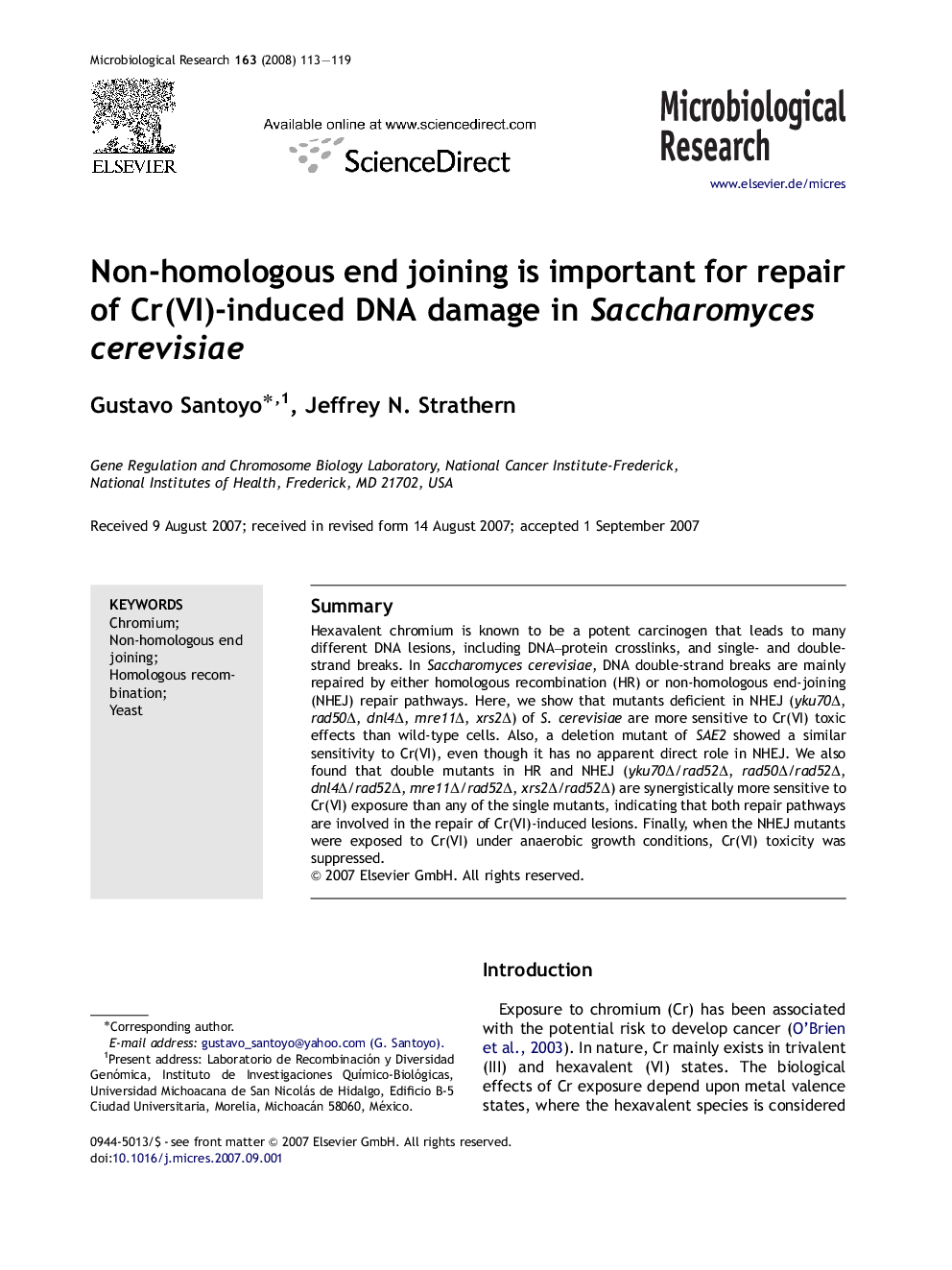| کد مقاله | کد نشریه | سال انتشار | مقاله انگلیسی | نسخه تمام متن |
|---|---|---|---|---|
| 2092779 | 1081815 | 2008 | 7 صفحه PDF | دانلود رایگان |

SummaryHexavalent chromium is known to be a potent carcinogen that leads to many different DNA lesions, including DNA–protein crosslinks, and single- and double-strand breaks. In Saccharomyces cerevisiae, DNA double-strand breaks are mainly repaired by either homologous recombination (HR) or non-homologous end-joining (NHEJ) repair pathways. Here, we show that mutants deficient in NHEJ (yku70Δ, rad50Δ, dnl4Δ, mre11Δ, xrs2Δ) of S. cerevisiae are more sensitive to Cr(VI) toxic effects than wild-type cells. Also, a deletion mutant of SAE2 showed a similar sensitivity to Cr(VI), even though it has no apparent direct role in NHEJ. We also found that double mutants in HR and NHEJ (yku70Δ/rad52Δ, rad50Δ/rad52Δ, dnl4Δ/rad52Δ, mre11Δ/rad52Δ, xrs2Δ/rad52Δ) are synergistically more sensitive to Cr(VI) exposure than any of the single mutants, indicating that both repair pathways are involved in the repair of Cr(VI)-induced lesions. Finally, when the NHEJ mutants were exposed to Cr(VI) under anaerobic growth conditions, Cr(VI) toxicity was suppressed.
Journal: Microbiological Research - Volume 163, Issue 1, 15 January 2008, Pages 113–119